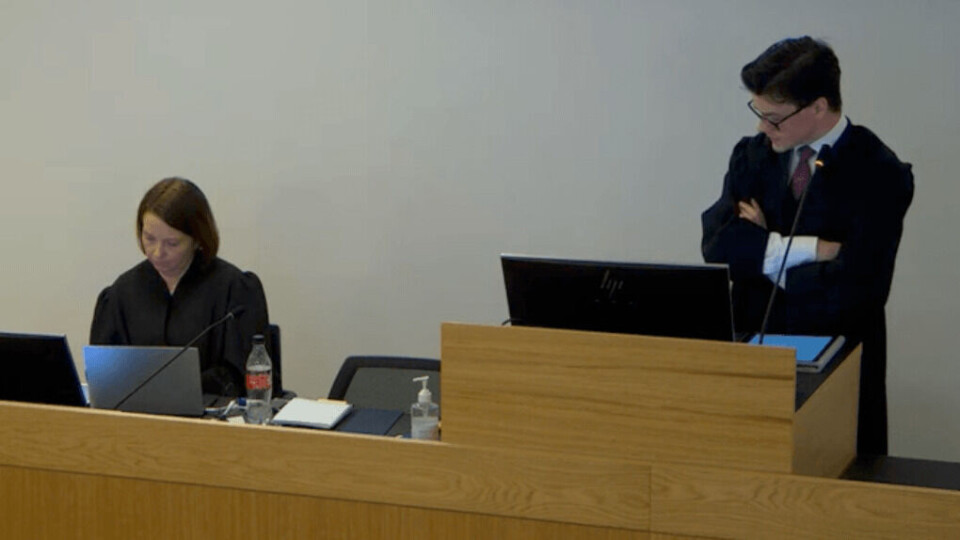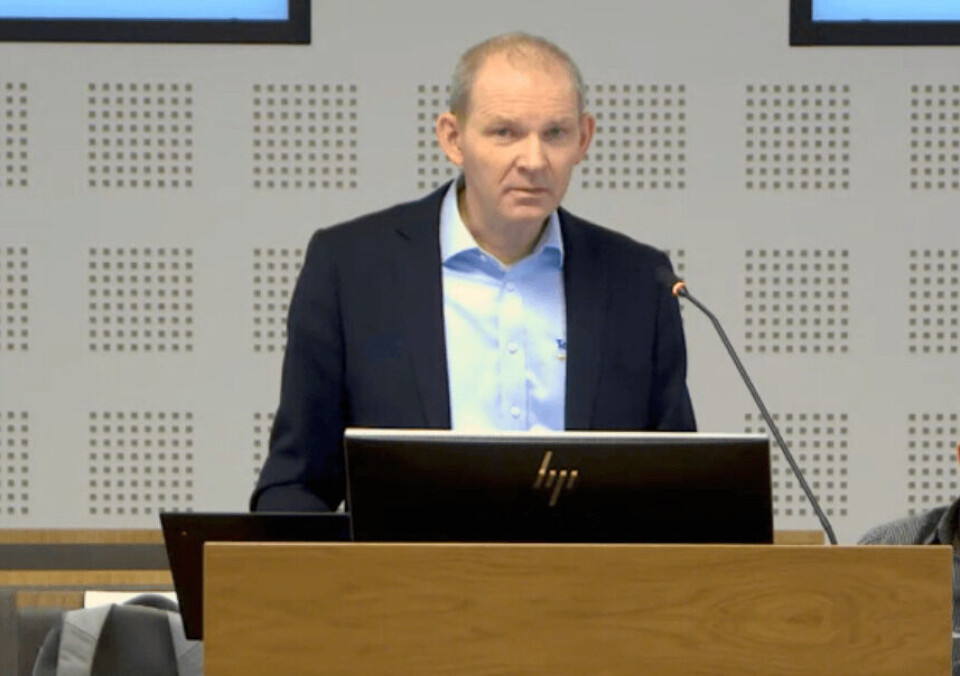
‘Traffic light’ trial: our experts are best in Norway, state lawyers tell court
Government lawyers have defended the methods used to determine the “traffic light” colours that regulate growth of salmonid farming in the 13 production areas along Norway’s west coast.
This week, a case brought by all 25 fish farming companies in production area 4 (PO4) against the Ministry of Trade and Industry began in Sogn og Fjordane District Court.
For all of Monday and part of Tuesday Trond Hatland, the lawyer for the farmers, tried to convince the court that the state made a mistake when it gave PO4 a red-light designation last year, and that the decision that the farmers must reduce production by 6% did not have a solid basis.
No errors
Lawyers Knut Klever Næss and Hilde Lund are leading the case on behalf of the state. They spent much of Tuesday reading passages from reports to document what lies behind the various concepts, the uncertainties in the assessments and how the process leading up to the traffic light colouring has taken place.
It became clear during Næss’ introductory speech that the state’s view is that the downgrade of PO4 is obviously valid.
“The farmers have so far not been able to show that there have been any errors in connection with the downgrade,” he said during the case.
6% reduction ‘not very intrusive’
During his opening speech, Næss said that the fish farming industry is a resourceful industry that wants to make as much money as possible.
“A reduction in production of 6% is not a very intrusive measure. The farmers are still allowed to produce 94% of the permit, despite the fact that the experts have concluded that the impact on the wild salmon is unacceptable.”
In contrast to Hatland, Næss believes there was a very good basis for giving PO4 a red light.
“There is a group of experts consisting of highly competent people who have made a thorough assessment of the condition, not only in PO4, but in all production areas. The group is composed of the best experts in the country,” he pointed out.
Are the experts wrong?
Hilde Lund took over after lunch. She thought one should ask oneself what the reason might be for setting aside the decision to colour PO4 red.
“Has the expert group been wrong on some points that are reflected in the fact that the conclusion should have been different,” she asked.
She referred to Hatland’s comment from Monday’s court day, where he stated, she said, that: “The knowledge base is really bad.”
“What the state has not looked at, the state has not been able to confirm. I will refrain from commenting further now, but rather leave it to the experts who will testify later in the trial,” said Lund.
Strengths and weaknesses
“The other party seems to forget the overall assessment that is made behind the decisions, including the emphasis the expert group makes on the various knowledge that has been used as a basis.
“The group is fully aware of strengths and weaknesses, for example in the individual models used. It looks like the plaintiffs think there should be a machine, where you can put in everything you know, then a colour will come out. That machine does not exist today, possibly it will exist in the future, but as of now an overall assessment must be made, in this case by humans.”
Lund also said that Hatland had insinuated that since the Institute of Marine Research (IMR), the Veterinary Institute and NINA are fully funded by the state, the research will be marked by this, and that he, in her opinion, had questioned the objectivity of the research institutions.
No basis for insinuations
“First, I would like to say that the state denies that there is a basis for these insinuations. But they also fall on their own unreasonableness. If you look at the totality of the conclusions, these vary between production areas. If there was an agenda behind it, you would think you would see a different pattern,” she said.
She referred to one of the traffic light reports (2016), where only one of 13 areas was classed as high risk (red light).
“What should we think about independence? I leave that question hanging,” she said.
The court today began hearing from witnesses, starting with Håkon Tombre, general manager of Tombre Fiskeanlegg, one of the companies taking action against the state.

Tombre described a serious financial situation for the company.
“2021 does not look so good. It is worse than 2020. In 2020, we floated for a long time at good prices in the first half of the year, before Covid-19 made its entrance. In 2021, there have been low prices all the time, and it seems to continue,” said the salmon farmer.
Prices are poor
He explained that the company is currently harvesting at two locations, but that the prices are poor.
“Some weeks we lose money. We have liquidity until the late summer, but then the cash register is empty. Then we’ll have to ask for overdraft facilities at the bank,” he said.
Tombre said the company is working towards reaching a production cost of NOK 39 per kilo, but that it has reached it yet. He also compared the company now to a tanker that loses engine power.
“When we get NOK 40 a kilo, we simply lose money on slaughtering the fish. We still have steering speed, but are about to lose it. If you lose speed, you lose the ability to manoeuvre and you become vulnerable.”
Reduction removes basis for harvesting
The family-owned company has been farming since the 70s, and has nine food fish licences and two hatchery fish permits. The group had sales in 2019 of approximately NOK 540 million.
If the state gets its way, Tombre Fiskeanlegg must reduce its production by 6% in PO4, where it has three sites.
“The reduction removes the basis for harvesting the biomass. If we had received a reduction in all our permits, including those in PO3, it would have been lost in 720 tonnes, which is almost a small licence,” said Tombre.
Worked hard to fight lice
He said the company had worked hard for several years to get below a lice limit of 0.1 lice, and added that the company had been allowed to buy 116 tonnes of extra MTB (maximum permitted biomass) for NOK 18 million because it was good at lice control.
“And then we got red light and downsizing in 2020 and not the shielding as described in the first regulation. The regulations were changed when the light was switched on,” said Tombre.
“I am very worried about the whole of Western Norway when it comes to being able to grow in the future. If you get red, you have to stand there for two years. If you collectively manage to get up to yellow, it is two years in yellow, before you can possibly manage to get up to the green light and get growth. If it is down to red again, then there is a new 6% reduction.”





















































